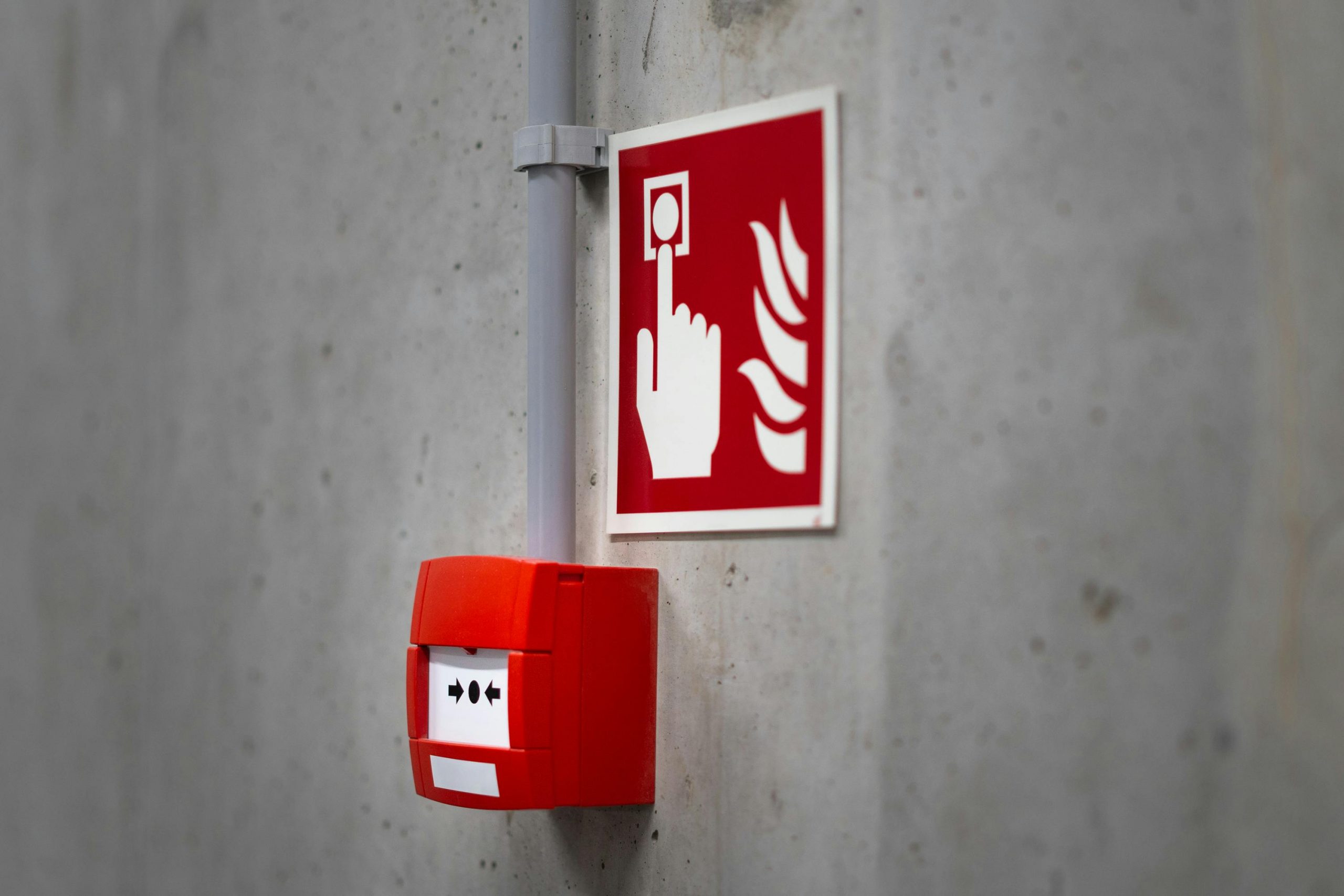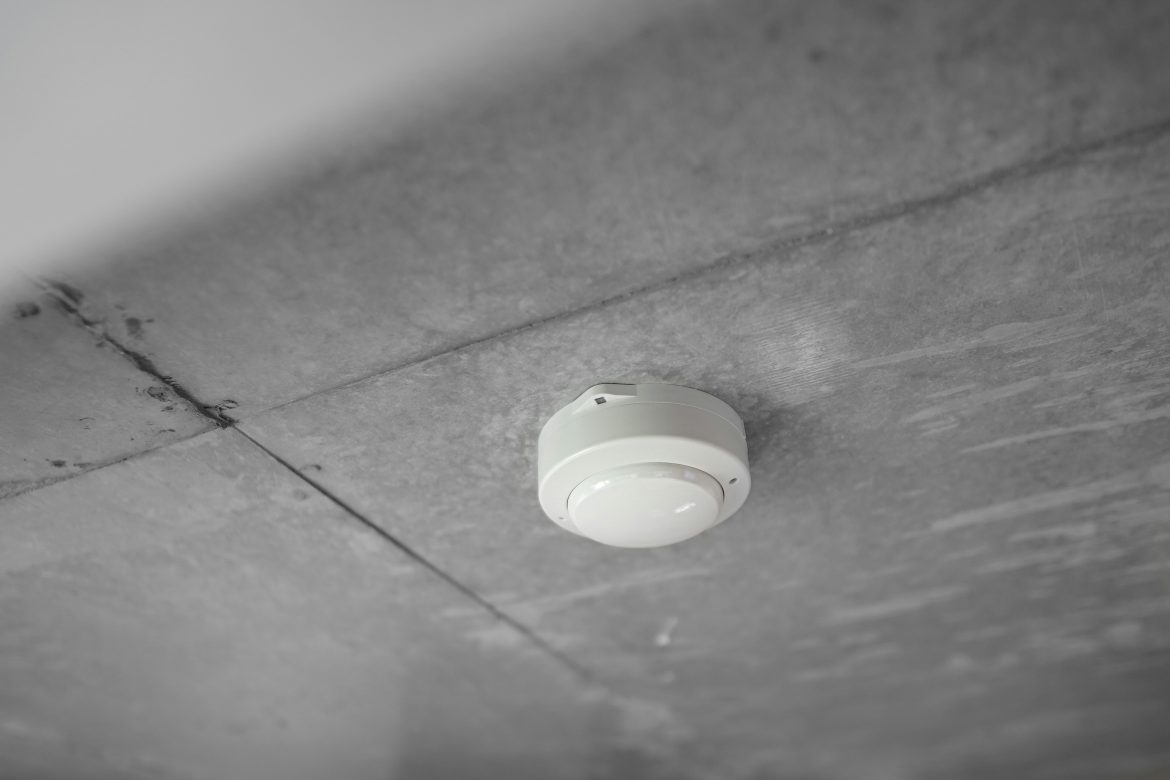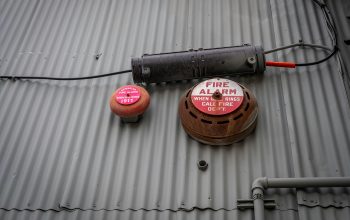Why Is My Smoke Alarm Beeping? Common Causes & Easy Fixes

A smoke alarm is a small device with a big job: keeping you and your family safe. But when it starts beeping for no clear reason, it can be annoying and even confusing. Don’t worry—you’re not alone. A beeping smoke alarm is a common issue, and the good news is that it usually has a simple fix.
In this guide, we’ll cover the most common reasons your smoke alarm is beeping, how to fix them, and when to replace your alarm. This article is written in plain language and easy to follow, even if you’ve never dealt with a smoke detector before.
1. Low Battery Warning

The problem: One of the most common reasons a smoke alarm keeps beeping is a low battery. When the battery starts to run out of power, the alarm will usually beep once every 30 to 60 seconds. This is a built-in feature designed to remind you that it’s time to change the battery. The beeping may continue even if there’s no actual fire risk, which can be confusing and annoying—especially in the middle of the night.
The fix: The solution is simple: replace the battery with a fresh one. Most smoke alarms use either a 9-volt battery or a pair of AA batteries, but be sure to check your specific model. After installing the new battery, press the “test” button on the alarm. If it beeps loudly, that means the battery is working and the unit is ready to protect your home again.
Tip: Even if your smoke alarm is hardwired into your home’s electrical system, it likely still has a backup battery. These backup batteries can also run low and trigger the same warning beep. Make it a habit to change all smoke alarm batteries once a year, and test them monthly to make sure they’re working properly.
2. Battery Pull-tab Not Removed
The problem: When you install a brand-new smoke alarm, it usually comes with a small plastic pull-tab that keeps the battery from connecting during shipping. This tab prevents the battery from draining before you set up the alarm. However, if you forget to fully remove the pull-tab—or if a small piece is left inside—the battery won’t connect properly. As a result, the smoke alarm may start beeping to let you know something’s wrong, even if the battery is fresh.
The fix: Open the battery compartment and check for the plastic tab. Gently remove the battery, inspect the slot, and make sure there’s nothing blocking the connection points. Remove the pull-tab completely if it’s still there. Then, reinsert the battery and make sure it fits snugly in place. Press the test button to confirm the alarm is now functioning properly.
Tip: Always read the installation instructions when setting up a new smoke alarm. Some models also come with a shipping clip or tape—remove everything before powering it on to avoid unnecessary beeping later.
3. Improper Battery Placement
The problem: If the battery isn’t seated properly inside the smoke alarm, it may not deliver enough power for the alarm to function. Even a slightly loose or misaligned battery can interrupt the connection, triggering the alarm to beep every 30 to 60 seconds as a warning. This is especially common if the battery is inserted at an angle, or if the battery terminals aren’t lined up with the contacts.
The fix: Open the battery compartment and carefully remove the battery. Inspect the terminals for dust or debris, and make sure the contacts aren’t bent or damaged. Reinsert the battery, pressing it firmly into place so that it sits snugly. Close the battery compartment securely—some alarms won’t stop beeping unless the door is fully latched. Finally, press the test button to confirm the alarm is receiving power and working correctly.
Tip: Double-check the battery orientation. Most smoke alarms have small diagrams inside the compartment showing how to align the positive (+) and negative (–) ends. Placing the battery backward won’t power the unit and will cause beeping.
4. Dust or Debris Inside the Alarm
The problem: Over time, dust, pet hair, cobwebs, or even tiny insects can find their way into your smoke alarm’s sensor. When this happens, the alarm may interpret the particles as smoke, leading to random beeping or false alarms. This is especially common in alarms located near kitchens, bathrooms, or ceiling fans where air movement stirs up debris.
The fix: Carefully remove the smoke alarm from the wall or ceiling, following the manufacturer’s instructions. Use a vacuum cleaner with a soft brush attachment to gently clean around the vents and openings. You can also use a can of compressed air to blow dust out of the sensor chamber. Avoid using water or cleaning sprays, as moisture can damage the electronics. Once clean, reattach the alarm and press the test button to confirm it’s working properly.
Tip: Clean your smoke alarm every 6 months as part of your home maintenance routine. Regular cleaning helps extend the life of the unit and ensures it operates reliably.
5. Temperature or Humidity Changes

The problem: Smoke alarms aren’t just triggered by smoke—they can also respond to sudden changes in temperature or high humidity. Steam from a hot shower or heat from cooking can confuse the sensor, causing it to beep or go off unexpectedly. This often happens when smoke alarms are installed too close to kitchens, bathrooms, or HVAC vents.
The fix: Relocate the smoke alarm to an area less affected by steam or heat. It’s best to install smoke alarms at least 10 feet away from cooking appliances and not directly outside a bathroom door. Also, avoid placing alarms in areas with poor ventilation or where temperatures fluctuate rapidly. If you must place an alarm near these areas, consider using a heat detector instead, which is designed for high-temperature environments and won’t respond to steam.
Tip: Look for alarms labeled as “photoelectric” if you need one near a kitchen—these are less prone to false alarms from steam or minor cooking smoke.
6. End of Life Warning
The problem: Smoke alarms are designed to last about 8 to 10 years. Over time, the internal sensors wear out and become less reliable. To prevent failure, most alarms are programmed to emit a consistent beep—usually once every 30 to 60 seconds—when they’re nearing the end of their usable life. This is different from a low battery beep and won’t stop even after changing the battery.
The fix: Look on the back of the smoke alarm for a manufacturing date. If the date is more than 10 years old—or approaching it—it’s time to replace the entire unit. Modern alarms often have a built-in end-of-life signal, and continuing to use them past that point could mean you’re not properly protected in the event of a fire.
Tip: When buying a new alarm, consider getting one with a sealed 10-year battery to avoid yearly battery replacements and make end-of-life tracking easier.
7. Interconnected Alarms
The problem: In many homes, smoke alarms are interconnected—meaning when one alarm goes off or starts beeping, it can trigger the others to do the same. This safety feature ensures you’re alerted no matter where you are in the house. However, it can also make it tricky to identify the source of the issue, especially if only one unit has a problem like a low battery or dust buildup.
The fix: Go to each smoke alarm and check for flashing lights or a more frequent beeping pattern. These signs can help you identify which unit triggered the alert. Replace the batteries in all interconnected alarms to ensure consistent performance. If one unit is malfunctioning or past its service life, replace it—preferably with the same brand and model to avoid compatibility issues.
Tip: When replacing one interconnected alarm, check the manufacturer’s instructions. Mixing different brands may cause false alarms or prevent proper communication between units.
8. Power Issues in Hardwired Alarms
The problem: Hardwired smoke alarms rely on your home’s electrical system for power. If there’s a disruption—like a tripped circuit breaker, a power surge, or loose wiring—the alarm may start beeping to alert you of a problem. Even a brief outage can cause some models to chirp until reset.
The fix: First, check your circuit breaker panel to see if a switch has tripped. If so, reset it by flipping it off and then back on. If no breaker is tripped, turn off the power to the alarm at the breaker, wait a minute, and then restore power to reset the unit. Some models also have a physical reset button you can press after restoring power.
Tip: If your hardwired alarm keeps beeping despite checking the power, it might be a wiring issue or an internal fault. In this case, it’s a good idea to consult an electrician or replace the unit entirely.
9. Malfunction or Defect
The problem: Sometimes a smoke alarm beeps even when the battery is fresh, the unit is clean, and there’s no sign of smoke or fire. This could point to a malfunction or a manufacturing defect. Internal circuits, sensors, or software can fail over time or from environmental stress, causing random beeping.
The fix: Start by reviewing the user manual for troubleshooting or reset instructions specific to your model. Most alarms have a reset button—press and hold it for 10–15 seconds to see if the beeping stops. If the issue continues, contact the manufacturer’s customer support. If the alarm is under warranty, they may offer a replacement. Otherwise, it’s best to replace the unit with a new one.
Tip: If your alarm beeps for no clear reason and is less than 10 years old, a defect is likely the cause. Always keep receipts and documentation in case you need to claim a warranty.
Safety Tips
Test your smoke alarms once a month
Press the “test” button on each alarm to make sure the sound is loud and clear. This helps you catch any issues before an emergency happens.
Replace batteries at least once a year
Even if your alarm hasn’t beeped, the battery can lose power over time. A good habit is to change batteries when you change your clocks for daylight saving time.
Replace the entire unit every 10 years
Smoke alarms wear out. Check the manufacturing date on the back—if it’s over 10 years old, it’s time to get a new one.
Keep alarms clean and dust-free
Use a vacuum or compressed air to gently remove dust and debris from the vents. This prevents false alarms and keeps sensors working properly.
Don’t ignore a beeping alarm—it’s trying to tell you something important
A beep is a warning. Whether it’s a low battery, dirt, or a real fire, address it right away to stay safe.
When to Call a Professional
If you’ve tried all the fixes and your smoke alarm still beeps, it may be time to call an electrician or home safety expert. Persistent beeping could signal deeper wiring issues or a faulty alarm.
Final Thoughts
A beeping smoke alarm can be annoying, but it’s usually easy to fix. Most often, the problem is a low battery or dust in the sensor. With simple maintenance and regular checks, you can make sure your alarm is working properly—and that your home stays safe.
Whether you’re dealing with a beeping sound or just want to stay ahead of the game, this guide should give you all the tools you need to keep your smoke alarms in top shape.



